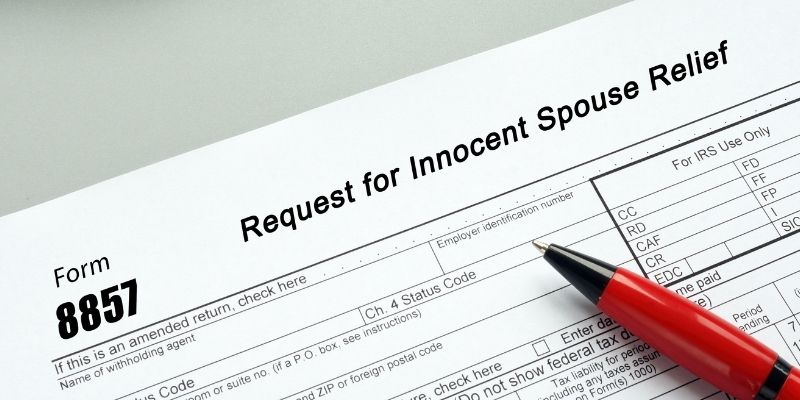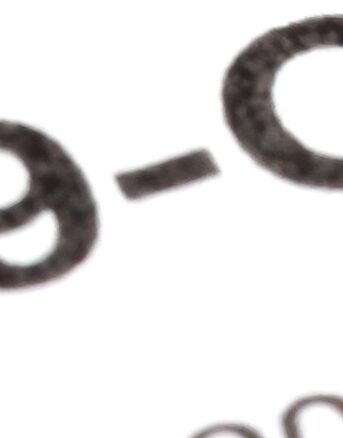Divorce and Taxes Owed: What to Do When the IRS Is Coming After You For Your Ex’s Problem
For many divorced spouses, their divorce did not mean the end of their mutual influence on each other.
One spouse, for example, may have to pay the other alimony and/or child support.
They may still have to see each other on a regular basis if they have shared custody of their children.
And if they filed taxes jointly during marriage, they’re still both on the hook for any back taxes owed on the jointly-filed years — even if the back taxes are only attributable to one spouse’s income or behavior.
This is because when you sign a joint tax return, you’re saying that you are just as responsible as your spouse for any tax liability shown on that return (and vice versa). This is known as joint and several liability.
“When filing jointly, both taxpayers are jointly and severally liable for the tax and any additions to tax, interest, or penalties that arise from the joint return even if they later divorce. Joint and several liability means that each taxpayer is legally responsible for the entire liability.” IRS Topic No. 205
Now, this may be an afterthought when a couple is still married and are, at least in some respects, still financially united.
But after a divorce, this whole joint and several liability thing can become front and center in one or both spouse’s lives — and this is especially the case when the IRS begins pursuing collection activities such as bank levies and wage garnishment against the spouse who feels they didn’t do anything wrong.
So what can be done for an individual who finds themselves in the unfortunate situation of being pursued by the IRS for tax debt that any reasonable person would say was the responsibility of their ex-spouse?
In addition to the typical tax relief methods such as the offer in compromise, there are some types of relief specifically for individuals facing tax debt caused by their ex-spouse’s income or behavior.
These relief methods are:
- Innocent Spouse Relief
- Relief by Separation of Liability
- Equitable Relief
- Special Exceptions for Domestic Abuse Victims
In all cases, you would have to file Form 8857 with the IRS in order to qualify for the relief.
Table of Contents
Innocent Spouse Relief
The first — and perhaps most well-known — type of relief for this situation is innocent spouse relief.
This relief is specifically for situations where an ex-spouse made errors on a jointly-filed tax return such as not reporting their full amount of income earned or improperly taking a tax deduction or credit.
If innocent spouse relief is obtained, the innocent spouse is relieved from the taxes, penalties, and interest due on the understatement of tax liability made by their ex-spouse.
How to Qualify
But here’s the kicker: In order to qualify for innocent spouse relief, you must establish that you did not know and had no reason to know that the tax return was incorrect in a way that led to an understatement of tax liability on the return.
So it’s not enough that you didn’t know your ex was playing games on your joint tax return — you also must not have had no reason to know about what they were up to.
Generally, the more removed you are from the error, and the more “hidden” the error is on the tax return, the more likely you are to qualify for innocent spouse relief.
Also — and this is admittedly quite subjective and generally at the discretion of the IRS employee(s) reviewing your situation — it must be unfair to hold you responsible for the back taxes attributable to the error.
Good Fact Pattern
The classic example is when your ex-spouse had their own business that you took no part in and had very little knowledge of.
For example, let’s say you know that your spouse spends a lot of money on television, radio, and online advertising, but you don’t really know exactly how much money.
So you really had no reason to know that your spouse, say, only incurred $80,000 in advertising expenses during the year but claimed $100,000 on their tax return.
Bad Fact Pattern
But if your ex, say, prepared your joint tax return and claimed a child tax credit on it when you and your spouse had no children, you likely wouldn’t qualify for innocent spouse relief.
A reasonable person signing their own tax return would likely question the claiming of a child tax credit when they have no children.
Note that innocent spouse relief can only be obtained for individual income tax and self-employment taxes and not for, say, household employment taxes.
Always Review Your Tax Returns
The IRS expects that if you sign a tax return, you have reviewed it.
In fact, it’s right there above the signature block on the Form 1040: “Under penalties of perjury, I declare that I have examined this return and accompanying schedules and statements, and to the best of my knowledge and belief, they are true, correct, and complete.”
You can’t sign a tax return and then say on your innocent spouse claim, “My spouse always prepared our tax returns, so I didn’t know we claimed the child tax credit even though we didn’t have any children.”
Sure, your spouse may have prepared the return, but a reasonable person who reviewed this tax return before signing it would likely question claiming this credit.
Don’t entrust all financial and tax matters to your spouse. Take ownership of your situation. Ask your spouse questions if you’re not sure what he or she is doing financially or on a tax return.
Educate yourself and review everything — tax-related or not — that your spouse asks you to sign.
Other Considerations
When evaluating your innocent spouse relief claim, the IRS will consider other factors such as whether you received significant benefit from the understatement of tax liability and whether your ex-spouse deserted you.
By “significant benefit,” the IRS means benefit beyond normal support. For example, if your spouse sold a company for millions of dollars and did not report that sale on your jointly-filed tax return and this company sale allowed you both to live a luxurious lifestyle throughout the remainder of your marriage, the IRS would likely consider you to have received a significant benefit from the understatement of liability on the return.
Relief by Separation of Liability
Injured spouse relief is nice, but it can be difficult to obtain because you must show that not only did you not actually know about your spouse’s understatement of tax but that you also had no reason to know. This can be difficult to prove.
No Actual Knowledge
Relief by separation of liability, however, only requires that you had no actual knowledge of the understatement of tax at the time you signed your joint tax return.
You must also not be living with your ex-spouse at any time during the 12 months preceding the date you file Form 8857.
Allocation of Liability
Under relief by separation of liability, you allocate the tax owed — including penalties and interest — between yourself and your ex-spouse with each of you only being responsible for your allocated portion.
Equitable Relief
Now, the two forms of relief discussed above — innocent spouse relief and relief by separation of liability — only apply if your ex-spouse made some kind of error on your jointly-filed tax return.
Relief Even If the Tax Return Was Correct
But what if the tax return was filed correctly — but the tax was simply never paid in part or in full?
Or what if there was a mistake on the tax return but you can’t qualify for the other two forms of relief?
In these cases, you have one more option — equitable relief.
With equitable relief, you’re essentially throwing yourself at the mercy of the IRS, which will look at a variety of factors in evaluating your relief claim.
Factors Supporting Equitable Relief
Examples of factors the IRS looks at when determining whether or not to grant you equitable relief include:
- Whether you would suffer a significant economic hardship (i.e. would be unable to pay your basic living expenses) if you were to be held liable for the debt in question
- Whether you benefitted from the unpaid tax
- Whether you knew or had reason to know about any errors on the jointly-filed tax return giving rise to an underpayment of tax (note that unlike innocent spouse relief, knowing or having reason to know about an erroneous tax item will not prevent you from obtaining equitable relief but may hurt your claim)
- Whether your ex-spouse abused you
- Whether you were in poor mental or physical health at the time you signed the joint return
When filing a claim for equitable relief, it’s very important that you complete Part IV of Form 8857 very carefully. In this section, you disclose your financial situation to the IRS. Generally, the worse off you can prove you are financially, the more likely the IRS is to grant your claim for equitable relief.
Special Exceptions for Domestic Abuse Victims
Unfortunately, domestic abuse affects an estimated 10 million people in the United States every year with as many as one in four women and one in nine men having experienced domestic abuse at some point in their lives.
The IRS understands that a domestic abuse victim may choose to go along with their abuser’s tax decisions out of fear of being abused.
As a result, the IRS has put in place special relief measures for domestic abuse victims who find themselves liable for their abusive spouse’s taxes.
Separation of Liability Due to History of Domestic Abuse
If you were the victim of domestic abuse at the hands of your ex-spouse, you may qualify for relief by separation of liability even if you knew about your ex-spouse’s understatement of tax.
In order to qualify for this special exception, you must show that your ex-spouse’s history of abusing you started before you signed the joint return and that because of this history of abuse, you were afraid to question the decisions your spouse’s made on the tax return and just “went along with it” out of fear of being abused.
Joint Return Signed Under Duress
Also, similarly, if you can show that you signed your joint return under fear of domestic abuse, then the joint tax return will not be considered valid and you will not be liable for the tax shown on that return. However, you may have to file a married filing separate return for that year to calculate your separate tax liability.
What You Should Do Next
If after reading this article you think you may qualify for one of the spousal relief methods described above, start gathering any data, correspondences (such as emails), and other documents to support your claim.
Then, start familiarizing yourself with Form 8857 to see if filing your claim is something you think you can do yourself or if you would prefer a tax professional to assist you with.
Also, it’s important to be realistic about the timeframe here. It’s not like the day after you submit your relief claim that the IRS will grant it. In my experience with my clients at the moment, the IRS is generally taking 8-12 months to review spousal relief claims.
And of course, if you have any questions about innocent spouse relief, relief by separation of liability, or equitable relief, feel free to leave them in the comments below!












